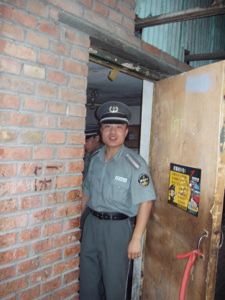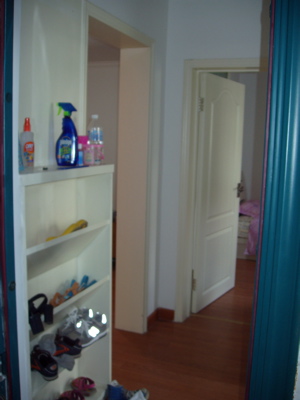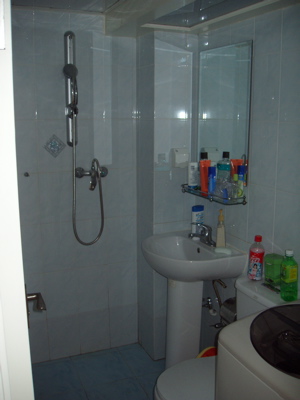

Beijing is a city of 15 million people. Probably most of those people live within a five-mile radius of the city center. The center is determined not by high-rises, as it would be in a medium-to-large American city, but by Tiananmen square; the rest of the city is highrises. The buildings of Salt Lake’s downtown could easily blend into most neighborhoods, I think.
The main streets are wide boulevards, and medium-sized highways to circle around and radiate from the city. At a large scale, the homogenous sprawl reminds me of Houston. At a more local scale, the boulevards are lined with shops, and driving down them is not unlike driving in, say, downtown Chicago. But the blocks are longer — a bit too long for walking:
 |  |
The space between the boulevards is very different still. Some parts of the city are still hutongs, which are the opposite of the boulevards: twistly little roads lined by mostly single-story buildings, some not wide enough for the smallest car. Many parts, I think, are like my block: roads just wide enough two of three small cars, lined by 4-to-8-story buildings with tiny shops and stands in clusters.
 |
These little neighborhoods are very walkable. It retrospect, the city overall seems designed not for walking or driving, but for biking. And there are still bikes. It’s no longer the famous river of bikes, nor the good-sized stream that I remember from 1994. But it’s a small stream, with roughly as many bikes as cars. Meanwhile, there are racks and racks of parked bikes everywhere.
We live in Zhong Guan Cun, which is a district in the northwest part of the city. Here’s what my street looks like (where the above picture is from the end of the street):
 |
Go in the gate (always with a guard):
 |  |
To the apartment complex courtyard:
 |  |
 | |
Here’s our building.
 |
We’re on the third floor. The middle two windows on the second row from the top are ours.
Into the building up the stairs...
 |
More stairs...
 |
And more stairs...
 |
And to the door.
 |
You can see that the semi-public spaces between roads and apartments look dirty and dilapidated to an American eye. Newer and wealthier areas are not like this, anymore, but it’s still typical for many places.
Go on in...
 |
and you’ll see that it’s neat and modern. This could be any small apartment in the U.S., except that the lightswitches are upside-down.
Let’s finish up the tour. Here’s the kitchen:
 |
The stove has its own little balcony attached to the kitchen, which is practial for Chinese-style cooking:
 |
Go back the other way into the combination living room and dining room (barely furnished, because we’re only here for a year):
 |  |
Then the bathroom:
 |
And bedrooms (with kids; the big one is a neighbor):
 |
| Contents: A Year in China: 2006-2007 | Next: People and Places |